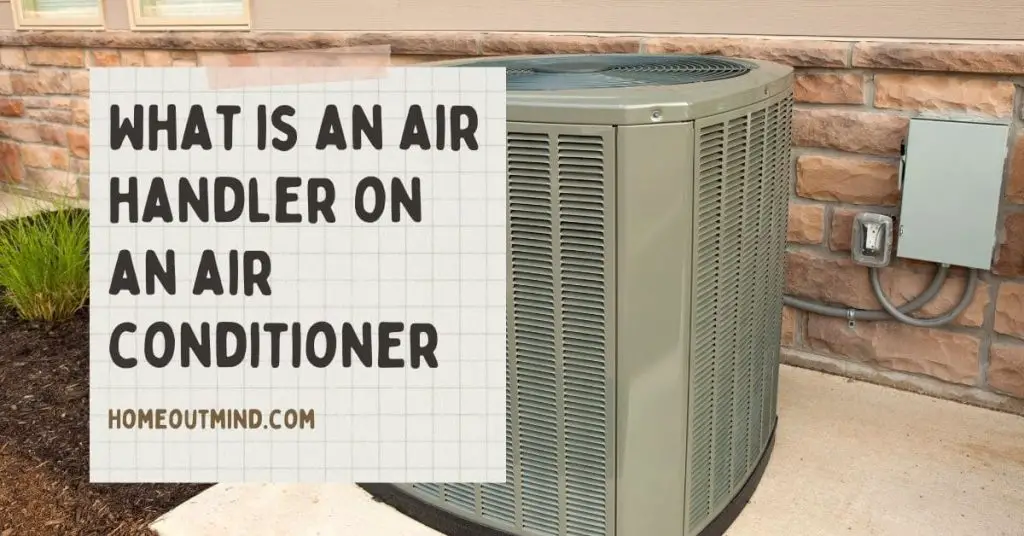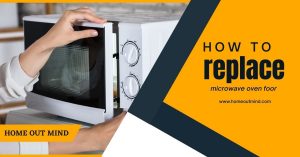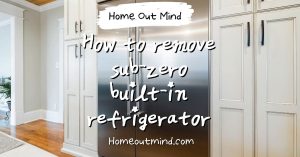Are you wondering what is an air handler on an air conditioner?
in this article we’ll learn what is an air handler on an air conditioner, how does it work, and types of air handler and troubleshooting moreover we’ll learn how to fix the problems which come from an air handler on an air conditioner of an air handler, follow this guide below:
The air handler and duct system have been designed to perform collectively to produce the fitting airflow in every setup. The conditioned air is supplied by a set of 2-inch ducts as a stream of air that entrains and mixes the room air. This technique of aspiration produces an additional even temperature distribution throughout the room.
The Unico ‘M’ Series air-handling models consist of various modules that are simply latched collectively.
The modules will probably be organized in a vertical-up-flow, vertical counter-flow, and horizontal-flow configuration. They will be combined as a heating-only, cooling-only, or heating and cooling air handler unit.
All insulated Unico System modules characteristic closed-cell insulation for improved sound attenuation. There isn’t any uncovered fiberglass insulation.
Each module is obtainable in 5 sizes: 1218, 2430, 3036, 3642, and 4860. There are three basic modules: a blower module, a cooling module, and a heating module. The blower module incorporates the blower wheel, blower housing, motor, and electrical administration area.
The cooling module includes a cooling-only refrigerant coil, a heat pump coil, or a chilled water coil. The heating module is supplied as an empty cabinet with room for a slide-in scorching water coil.
The modules will probably be organized to produce solely the alternatives needed. Heating-only strategies require the blower module, the heating module, and a hot water coil. Cooling-only strategies embody the blower module and a cooling module.
For heating and cooling, all the modules are combined with coils.
The system might even be used for ventilation-only, using merely the blower module.
Unico designed and constructed blowers attribute direct drive motors or EC motors and are positioned throughout the air stream. Each blower wheel is balanced to Unico specs.
The blowers characteristic a twist-and-lock motor mount for easy maintenance. The motorized blower assembly consists of the motor, which is mounted to the inlet ring, and the wheel, which is mounted to the motor shaft.

How does an air handler work?
Your chilled water air conditioning system consists of the chiller, air handlers put in all through the vessel, freshwater piping connecting the chiller to the air handlers, and the seawater system. The chiller consists of three main elements: the compressor, the condenser, and the evaporator (or warmth exchanger).
The chiller is charged with a refrigerant that circulates all through these elements. The air handlers include two main elements: the blower and coil.
Freshwater circulates by the piping from the chiller to every air handler and again.
In cooling mode, heat cabin air is drawn (or blown) throughout the air handler coil by the blower. Heat is far away from the air because it passes throughout the coil.
The cooled air is then blown again into the cabin. The warmth from the cabin air is transferred to the freshwater circulating by the coil. The warmed water is pumped again to the chiller.
The water is circulated by the chiller’s evaporator the place the warmth is transferred to the refrigerant within the evaporator coil, thus cooling the “chilled” water.
The “heated” refrigerant gas is returned to the compressor, compressed, after which circulated by the outer tube within the chiller’s condenser coil. Seawater is circulating by the condenser through the seawater system.
The warmth is transferred from the refrigerant to the seawater and pumped overboard taking the unique cabin air warmth with it.
The circulating, “chilled” water (not seawater) is then pumped again by the piping to the air handlers in a steady loop because the cycle repeats.
f the vessel is heated, it’s both by reverse cycle or electrical warmth. Each technique pumps heat water from the module to the air handler.
For reverse cycle heating, the module’s refrigerant flows in the other way by a reversing valve, thus including warmth to the freshwater loop, as an alternative of eradicating it within the cooling mode.
Electric warmth methods use a heater barrel to heat the freshwater.
Some methods additionally use electrical heating coils constructed into the air handlers that heat the air instantly.
Where ought to I put my air handler in my home?
NOTE: Never set up an air handler within the bilge or engine room areas. Ensure that the chosen location is sealed from direct entry to bilge and/or engine room vapors.
Do not terminate condensate drain line inside 4 ft of any outlet of the engine or generator exhaust methods, nor in a compartment housing an engine or generator, nor in a bilge, until the drain is linked correctly to a sealed condensate or bathe sump pump.
Do not find the air handler or ducting in places the place they might turn into conduits for hazardous fumes. Be particularly aware of this with ducted-inlet items akin to ducted-inlet recent air make-up items.
For instance, don’t find air inlets or discharges close to sources of exhaust fumes.
SOLID AND LEVEL: The air handler has to be securely mounted to a powerful, unmoving construction.
The air handler will tip with the boat when the boat ideas, however when the boat is on the stage, the air handler should even be on stage.
ACCESS: Select a location that permits good entry for service, a visible inspection, and removal of the unit. It is particularly necessary to guarantee that the filter could be conveniently changed.
The 3-way valve (if any), electrical warmth (if any), handbook thermal overload (for models with electrical warmth), blower, bleeder, duct connection, water connections, and the service ball valves (provided by the installer) should all be accessible for service.
AUDIBLE NOISE: Finding good places for the unit, duct, diffusers, and return-air grille is an effective beginning in the direction of a quiet room.
AVOID CONDENSATION: Most air handlers solely have 1/8″ of insulation. They will carry out higher, make much less condensation, and look higher longer if they’re situated in a semi-conditioned house.
If potential, keep away from placing them in locations the outside of the air handler might be uncovered to outdoors air or air from saunas or showers.
Note that engine rooms often have giant ventilators, exposing all the pieces within the engine room to the skin air.
FREEZE PROTECTION: Putting the air handler in a semi-conditioned house may also assist shield towards freezing. Exposure to sub-freezing ambient air might freeze the coil if sufficient precautions usually are not taken.
When potential, keep away from the state of affairs completely by not exposing the air handler to sub-freezing temperatures.
How do I reduce air handler noise?
Air motion causes noise. Thus, a certain quantity of noise is an unavoidable consequence of any air-moving gadget. The extra air is moved, the louder the noise might be.
However, some methods of transferring air trigger much less noise than others.
Key principal:
1. Rigid, heavy supplies are inclined to replicate airborne noise. Soft, THICK supplies are inclined to dissipate a small fraction of the noise passing via them.
Thus, these two varieties of materials are inclined to work nicely collectively, particularly when layered.
The (first) layer of sentimental materials ought to be between the noise supply and the heavy, inflexible layer.
2. In basic, something that causes turbulence or restriction is prone to create noise.
Exception: There are sound absorbing packing containers and duct configurations that are restrictive and maybe even turbulent, however, their web impact is to REDUCE the transmitted noise.
A great instance is a return-air association described beneath.
3. Sharp transitions are inclined to create extra noise than clean transitions.
4. Slow transferring air tends to make much less noise than fast-moving air. Thus, a big duct tends to create much less noise than a small duct. (However, don’t grossly oversize the duct if it means creating sharp transitions.)
Large diffusers are inclined to create much less noise than small diffusers.
However, don’t grossly over-size the diffuser. Grossly oversizing a diffuser will cut back the speed and momentum of the leaving air (its “throw”).
This could cause the air within the room to be poorly combined. If the provision is near the return, it will possibly additionally trigger an undesirable “brief circuit impact”, with the provision air returning on to the unit without doing a lot to chill the house.
• Straight duct tends to create much less noise than bends.
• A gradual bend (giant radius) within the duct tends to create much less noise than a pointy bend (a small radius).
PRACTICAL SUGGESTIONS :
1. Vibration: Transmission of vibration generated by air handler isn’t if ever a difficulty. But, be certain that the air-handler is securely mounted to an inflexible, large construction.
If vibration isolators are included with the air handler, use them. Aside from that, concentrate on airborne noise.
2. Blower kind: Consider utilizing items with DC blowers. DC blowers are quieter than normal blowers.
3. Multiple items: For noise-critical areas, several small items could also be higher than one giant unit. Smaller items transfer much less air.
More diffusers normally imply much less “throw” is required. Ductwork tends to be shorter and less complicated.
It will normally be attainable to oversize the duct. (For instance, 8″ duct is normal for a 24Okay, however, a pair of 12Okay air handlers can each use 6″. For a 12Okay, 7″ is properly outsized, lowering noise technology.)
All of those components tend to scale back noise.
4. Return-air grilles: Putting the unit near the return-air grille is normally a good suggestion. But if noise is crucial, it might be higher to place it at a slight distance.
Airborne sound likes to journey down a brief, straight path with heavy, inflexible partitions that channel the noise.
So, make the space lengthy. Include several 90-180° adjustments of course. Use heavy, inflexible partitions to maintain the noise from escaping, however, line these partitions with mushy, sound-absorbing materials.
Cautions: Be positive the unit is drawing its air from the house it’s conditioning. Be positive that the return-air path is generously sized.
(The cross-sectional space at each level within the return-air path ought to be no less than as giant because of the minimal return-air grille dimension.
Any restriction right here will adversely affect the unit’s airflow and efficiency, and can be inclined to trigger air to be drawn in from undesirable locations.)
Be positive the unit continues to be accessible for service and removal. Be positive that the supplies you employ are appropriate from a flammability and smoke-generation standpoint.
The filter may be distant from the unit, however, make sure that air can’t bypass the filter. Be positive the filter is instantly replaceable.
• Duct size: Most air handlers ought to have no less than 5 toes (1.52m) of the duct. This size reduces motor noise and blower vane tip noise transmitted to the house.
• Bends: ONE 90° bend within the provided duct is fascinating as a result of it would attenuate noise that was generated upstream.
It ought to be downstream of the unit and any transition packing containers.
Each further elbow will present successively reducing noise attenuation, and the advantage of any further noise attenuation is normally outweighed by the extra noise generated by the restriction.
• Blower speed: Do not use ductwork or diffusers to scale back airflow. This will create noise. Instead, cut back the blower speed.
• Experiment: The extra practical the related circumstances are, the extra important the outcomes might be. Some top-quality yacht builders routinely assemble mock techniques exterior the vessel.
They can simply modify it and check out various things as a result of it isn’t put in in a ship. They understand how nicely a given duct design will work BEFORE they set up it, maybe even earlier than the format of the boat is finalized.
What are the different types of air handlers?
AT AIR HANDLERS :
1) Rotatable Blowers: AT air handlers have rotatable blowers. The blower ought to be rotated so that the duct can come off straight. Minimize the quantity and severity of bends within the duct.
2) Overload Reset Access: There is an inexperienced plug on the high of the unit. Removing this plug opens entry to the reset button on the thermal overload. Use a plastic pen or one other non-conductive object to depress the overload. Remember to place the plug again. The plug helps stop air from bypassing the coil.
• Secure the unit to the deck utilizing the mounting toes supplied.
ATL AIR HANDLERS:
• ATLs are low-profile air handlers for horizontal purposes. They are an appropriate alternative for horizontal Slimline. They have stronger blowers than the outdated Slim strains, and likewise are typically quieter. The ATL is meant to be ducted.
• ATLs might be suspended or deck mounted. Brackets for this objective are included with the unit. Note that the peak of the suspension bracket is adjustable.
ATV AIR HANDLERS:
• ATVs are designed for purposes the place depth is restricted. They are an appropriate alternative for vertical Slimline. They have stronger blowers than the outdated Slim strains, and likewise are typically quieter.
Like the AT, the ATV is meant to be ducted.
• ATVs ought to be secured on the base utilizing the clips supplied. The clips want solely to save the unit from transferring. The springy clips and insulation present vibration isolation.
The high should even be secured. Note that the highest brackets have adjustable depth.
ABL AIR HANDLERS:
• ABL airhandlers are dual-blower airhandlers.
• ABL air handlers might be suspended or deck mounted utilizing the brackets supplied. Suspension mounting is usually most popular as a result of heater entry is from beneath.
BLOWTHROUGH AIR HANDLERS:
• Blowthroughs are non-deductible air handlers designed to be put in excessive cabin space, on the high of lockers, bulkhead corners, or overhead compartments. Because they don’t seem to be ducted, they need to be capable to ship air immediately into the conditioned house.
They should be positioned towards the within of a bulkhead or partition frequent to the house to be conditioned. The supply-air grille must-have free space is no less than equal to the cross-sectional space of the coil (i.e., size x width of the coil).
• If the Blow through can’t be flush mounted towards the bulkhead or partition, a plenum chamber could also be hooked up between the face of the coil and the within of the partition. The cross-sectional space of the plenum should be equal to or barely bigger than that of the coil. The plenum should be a brief, straight run, and it should be fully sealed.
Blow through are NOT meant for ducted purposes. The plenum should be insulated and have a great vapor barrier to stop condensation.
Wood is permeable to water and water vapor and ought to be sealed to stop delamination.
• There are 4 vibration isolation grommets on the high of the unit for suspension mounting. Each grommet has a gap for a screw.
• The filter and return air to a Blow through air handler should be supplied by a correctly sized return-air grille. The filter should be positioned on the return-air grille as a result of the unit can’t settle for a filter. Be positive any gaps within the return-air path are stuffed so that no return air can bypass the filter.
GOLD SERIES (AU) AIRHANDLERS:
• Rotate the blower: Loosen the band clamp and rotate the blower to the specified place. Re-tighten the band clamp as soon as the blower is within the desired place. For added safety towards condensation.
• Mounting: First insert the grommets. Then insert the sleeves. Use each clip within the entrance. Use each grommet and sleeve to save the air handler to the deck Also use two clips within the entrance to save the air handler to the deck. Thus, the air-handler is secured at 4 factors (2 grommets + 2 clips).
One clip goes wherever on the left of the entrance drain, one clip goes on the appropriate.
Read also:
- How to install air conditioner condenser?
- How to remove air conditioner?
- How to replace air conditioner ducts?
- What is a split system air conditioner?
- Air conditioner capacitor what does it do?
- How to install a wall air conditioner?
- The ultimate guide to air conditioner troubleshooting
- How to clean air conditioner?
After reading and following the guide you may have a general overview of what is an air handler on an air conditioner?




